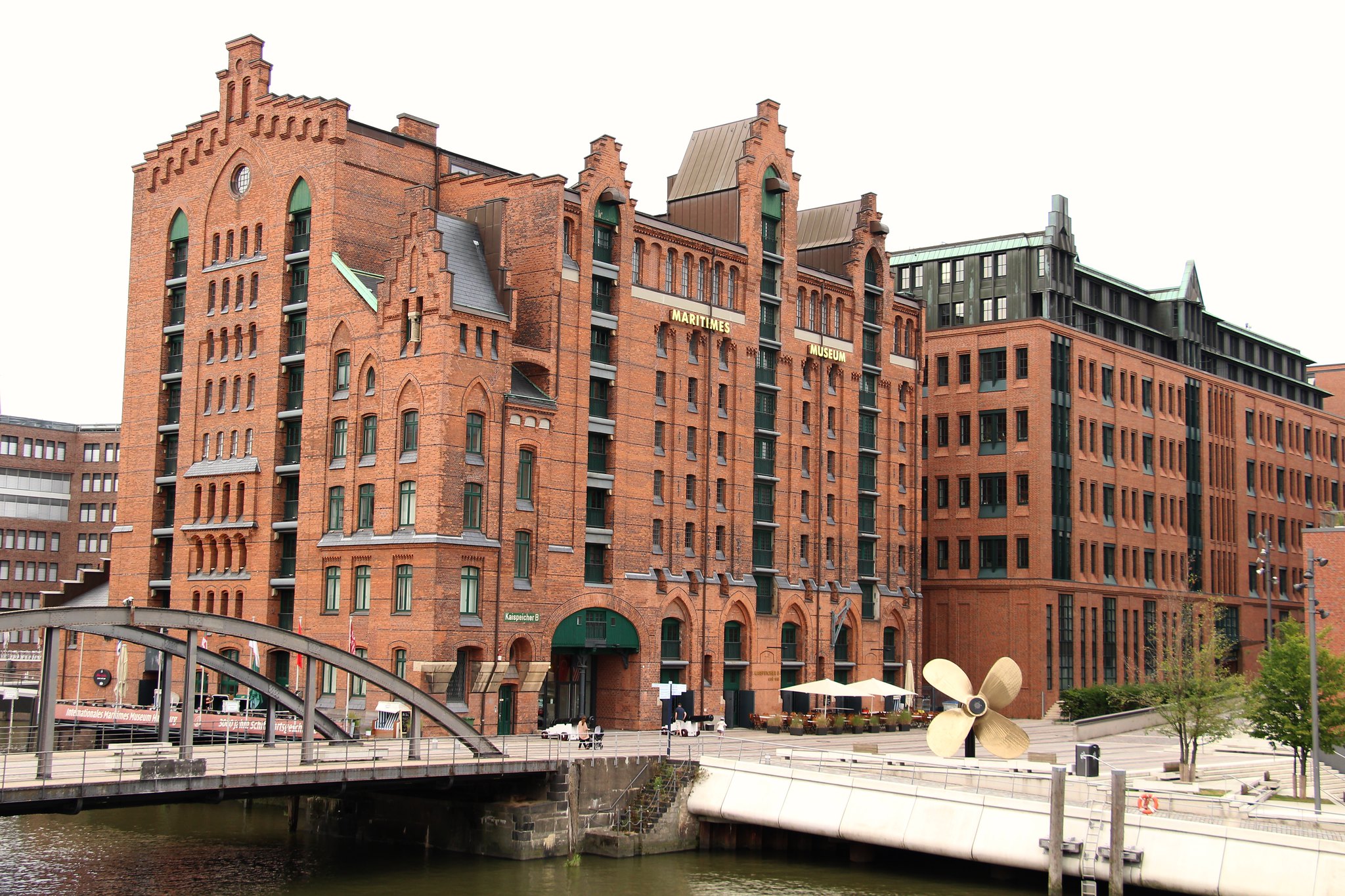The International Maritime Museum, located in Hamburg, Germany, is a world-renowned institution dedicated to preserving and showcasing maritime history. Housed in a historic warehouse building in the HafenCity quarter, the museum spans ten floors and features over 40,000 model ships, 1,000 original artifacts, and numerous maritime paintings and photographs. Established in 2008, it offers visitors a comprehensive journey through 3,000 years of seafaring history, covering topics such as navigation, shipbuilding, marine research, and the role of ports in global trade. The museum’s extensive collection includes exhibits on naval warfare, piracy, and the evolution of maritime technology, making it a significant cultural and educational destination for maritime enthusiasts and history buffs alike.
Step into the International Maritime Museum, and you’ll find yourself transported back in time to an era when sailors relied on the stars, winds, and their own ingenuity to navigate the vast oceans. This fascinating exhibit offers visitors a unique opportunity to delve into the world of ancient navigation techniques, showcasing the incredible skills and knowledge that seafarers developed over centuries of maritime exploration.
As you wander through the dimly lit halls, you’ll encounter a treasure trove of artifacts and interactive displays that bring these age-old methods to life. One of the first things that catches your eye is a beautifully crafted astrolabe, an instrument that was once essential for determining latitude at sea. It’s hard not to marvel at the intricate design and imagine the steady hands of a skilled navigator using it to plot a course across uncharted waters.
Moving on, you’ll find yourself face-to-face with a collection of ancient maps and charts. These yellowed parchments, adorned with intricate illustrations of sea monsters and far-off lands, tell the story of how our understanding of the world’s geography evolved over time. It’s a humbling reminder of how much we’ve learned since those early days of exploration.
But the exhibit isn’t just about looking at old objects behind glass. The museum has gone to great lengths to create immersive experiences that allow visitors to try their hand at some of these navigation techniques themselves. In one corner, you can attempt to use a sextant to measure the angle between the horizon and a celestial body, just as sailors did for centuries to determine their position at sea.
As you continue your journey through the exhibit, you’ll learn about the importance of dead reckoning, a method that relied on careful calculations of speed, time, and direction to estimate a ship’s position. It’s a stark contrast to the GPS systems we rely on today, and it’s hard not to feel a sense of awe for the navigators who managed to cross vast oceans using such rudimentary tools.
One of the most intriguing aspects of the exhibit is the section dedicated to Polynesian navigation techniques. Here, you’ll discover how Pacific Islanders used their intimate knowledge of ocean swells, wind patterns, and even the flight paths of birds to navigate between distant islands. It’s a testament to the power of observation and the deep connection these seafarers had with their environment.
Throughout the exhibit, informative placards and multimedia presentations provide context and bring these ancient techniques to life. You’ll learn about the development of the magnetic compass, the use of lead lines to measure water depth, and the crucial role of celestial navigation in maritime history.
As you near the end of your journey through time, you’ll find yourself reflecting on the incredible ingenuity and bravery of those early explorers. The exhibit does an excellent job of highlighting how these ancient navigation techniques laid the foundation for modern maritime practices and how they continue to influence navigation today.
Before you leave, don’t forget to check out the museum’s gift shop, where you can pick up replicas of some of the navigation tools you’ve seen. It’s a great way to take a piece of maritime history home with you and perhaps even try your hand at some ancient navigation techniques in your own backyard.
In the end, the Ancient Navigation Techniques exhibit at the International Maritime Museum offers a captivating glimpse into the methods that allowed humanity to explore and map our world. It’s a must-see for anyone with an interest in maritime history, navigation, or the spirit of exploration that has driven us to push the boundaries of our knowledge for centuries.
The International Maritime Museum serves as a vital repository of maritime history and culture, showcasing the global impact of seafaring through its extensive collection of artifacts, models, and exhibits. It offers visitors a comprehensive exploration of naval architecture, navigation techniques, and the evolution of maritime trade. The museum’s educational programs and interactive displays foster a deeper understanding of the ocean’s role in human civilization, while also highlighting the importance of marine conservation. By preserving and presenting maritime heritage, the International Maritime Museum continues to inspire future generations and promote awareness of the ongoing significance of maritime affairs in our interconnected world.

